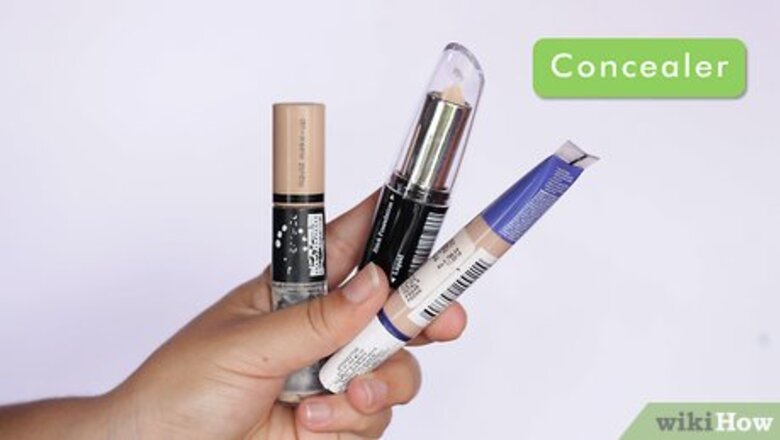
views
Applying a Concealer
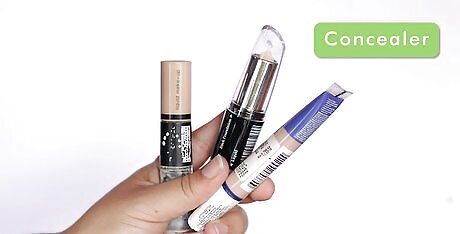
Choose your concealer. To combat the blue and gray color under your eyes, choose an orange or peach colored concealer. Orange is the complementary color to blue, which means when orange is applied to a blue area, the colors "cancel" one another out. Pick a color that is only one or two shades darker than your skin – otherwise, the concealer will be visible against the normal color of your skin. Concealers come in liquid and stick form. Liquid concealers are good for light coverage, while sticks are great for smaller or narrower areas. Any type of concealer will work, though remember that liquid makeup may appear glossy, whereas powder makeup can give a matte appearance. Choose a makeup based on your skin type – oily skin is more likely to be “shiny” with certain liquid makeup, for example.
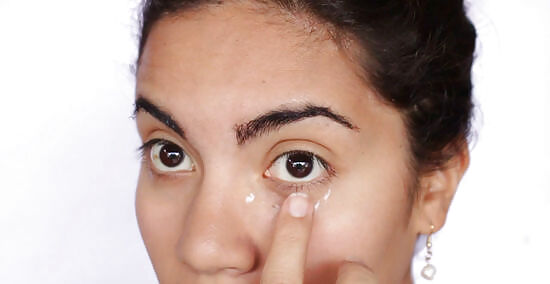
Prepare your skin. Apply an eye cream to both eyes to make sure your under-eye area is well-moisturized. If there's any hint of dryness, the concealer will turn chalky and become very noticeable to others. Try keeping the eye cream in the fridge prior to application. The cold temperature of the cream contracts the skin, allowing for a tighter appearance. Try using an eye cream with caffeine to help with puffiness and dark circles. If you wear foundation, put it on before applying concealer. However, any powder-based makeup, including foundation should, go on last, after the concealer.

Apply the concealer. Use either a small nylon concealer brush, sponge, or your fingers to apply concealer below the shadows of your eye bags. Dab the concealer on to provide an even, blended coverage, without smearing. You want to apply just below the crease of your bags and blend downward, toward your cheek bones, in a triangular fashion. Aim for the top of your cheeks, just below the bags and shadows. Don’t apply makeup directly to the puffiness! The area under your eyes will wrinkle under heavy makeup, causing the bags to stand out even more. Applying the concealer below the bags draws attention to that area, instead of your puffy eyes. If you use powder foundation, remember to apply the concealer before applying the foundation.
Touching Up and Setting Your Concealer
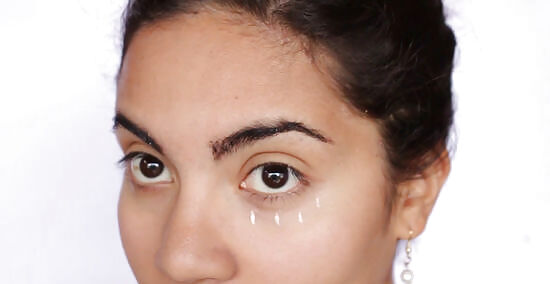
Assess the application. Take a moment to let the concealer set. If there's still darkness under your eye, you may add a bit more concealer, but keep it light. If the concealer is too bright, you will need to blend the makeup out. If the concealer is too dark, balance it out with a concealer that is one shade lighter than your skin tone. This will help highlight the area below the puffiness.
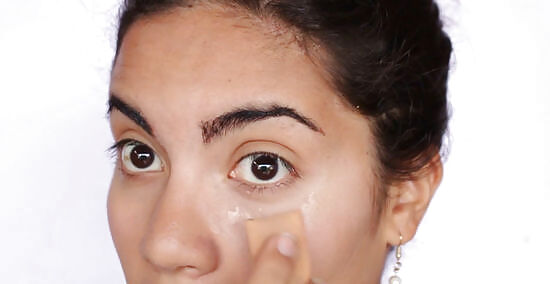
Pat under the eyes to blend. Use a concealer or foundation of your natural skin tone to blend the previous application of concealer with the rest of your skin. This helps create a more natural appearance and remove a “caked” or overly-bright look. Patting the concealer rather than rubbing help avoid smearing the makeup, and creates a more even blend. If using your fingers to blend the concealer, use your ring finger. The ring finger tends to be the weakest finger, and provides a gentler touch.
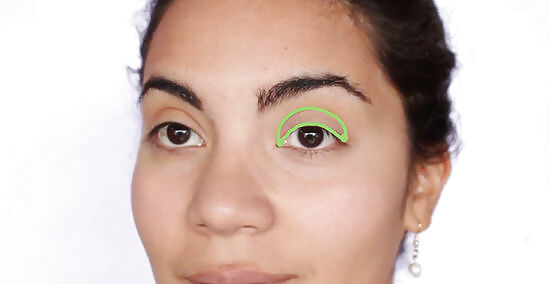
Brighten around your eyes. Use a pale, pink colored highlighter to add some color to the inner and outer corners of your eyes. This helps draw attention to your eyes, and away from the bags and shadows. Avoid eye liner or shadow in darker colors. Such colors can draw attention back to the bags you’re trying to hide. Don't forget the inner area of the eye, near the bridge of the nose. Adding just a small amount of concealer or highlighter here can help brighten your whole face.
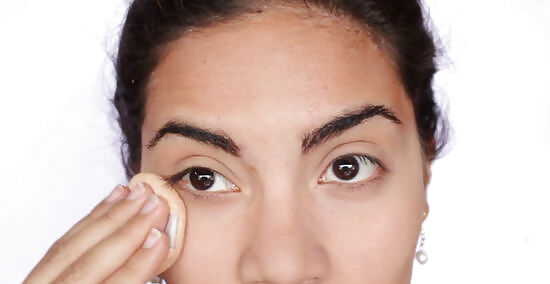
Set the makeup. Use a face powder to set the makeup on your face, keeping it locked in and looking good all day. Take care to apply just a thin layer to avoid too much buildup of makeup. No need to apply powder to your entire face. Just lightly dab the powder in the areas where you have applied makeup. You can opt to use a bit more powder in areas prone to shininess – powder provides a matte look.
Living a Healthier Lifestyle
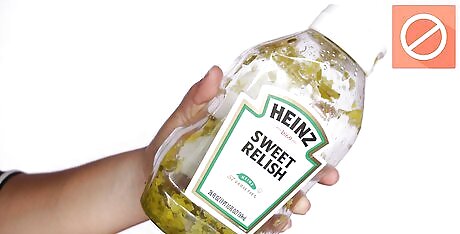
Cut back on salty foods. The bags under our eyes are caused by fluid retention. Overconsumption of salt leads to this retention, meaning cutting back on the amount of salt in your food can help reduce the puffiness in your eyes. Lay off the foods that are high in sodium, such as pickles, olives, soup, and fast food. Eat more foods that are high in potassium, such as bananas, avocados, and celery. These foods help balance the sodium in your body.
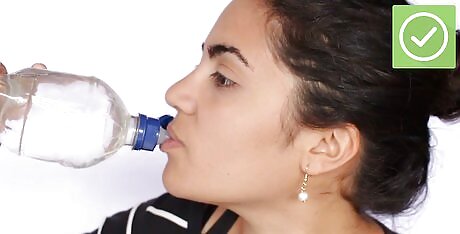
Drink more water. The body holds on to water when you are dehydrated, leading to fluid retention. Upping your water intake can reduce this retention, reducing the bags under your eyes. Aim for eight glasses of water a day (8 ounces each) to keep a healthy hydration level. Water is gained through food as well. Try upping the amount of fruit and vegetables you eat to supplement your water intake. You can also stay hydrated by drinking beverages like tea and coffee, which are mostly water.
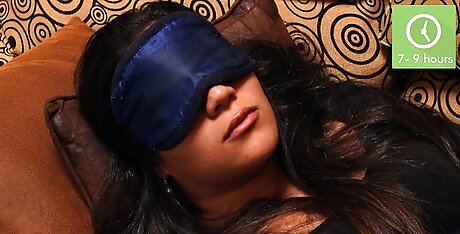
Get enough sleep. A lack of good rest causes fluid retention and dark shadows under our eyes. Make sure you get between 7 and 9 hours of sleep per night, depending on your individual needs. Though a lack of sleep contributes to eye bags, sleeping more is not necessarily a cure. If you already get plenty of sleep and still have eye bags, forcing yourself to sleep more will not reduce the puffiness.
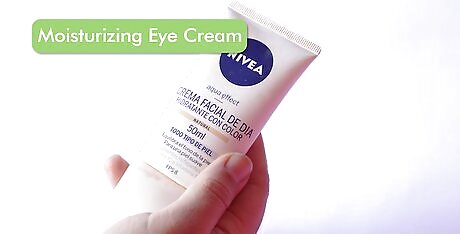
Remove your makeup at night. Leaving face and eye makeup on at night can clog pores, cause acne, and generally prevent your skin from restoring itself overnight. Make sure to wipe off any makeup prior to sleeping for the night to reduce damage to the eyes. Use a moisturizing eye cream overnight to help remove wrinkles and lines associated with puffy bags.
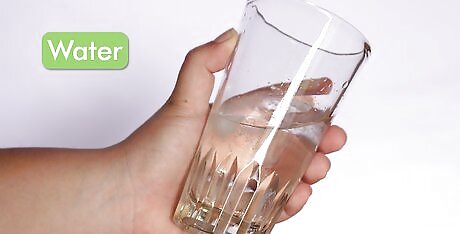
Get your allergies in check. Seasonal allergies and sinus problems cause swelling, which can lead to those pesky eye bags and shadows. Talk to your doctor to discuss your allergies and see if there is a treatment option that can help combat the problem. Over-the-counter decongestant or neti pots can help keep things moving in your sinuses, without the need for a prescription. Stay hydrated! Water will keep those dark circles from appearing, but also keeps your nasal passages and sinuses well lubricated.


















Comments
0 comment